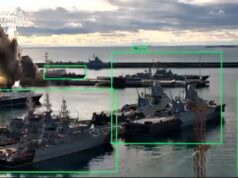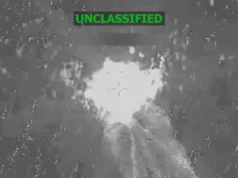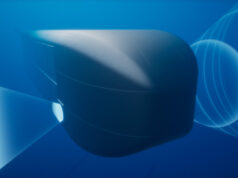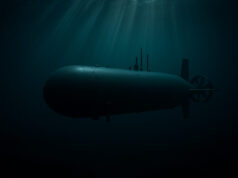The U.S. Navy has accepted delivery of the guided missile destroyer Delbert D. Black (DDG 119) from Huntington Ingalls Industries.
The 68th Arleigh Burke class destroyer honors Delbert D. Black, the first Master Chief Petty Officer of the Navy, and will be the first naval ship to bear his name.
The DDG 51 class ships currently being constructed are Aegis Baseline 9 Integrated Air and Missile Defense destroyers with increased computing power and radar upgrades that improve detection and reaction capabilities against modern air warfare and Ballistic Missile Defense threats.
In addition to Delbert D. Black, HII’s Pascagoula shipyard is also currently in production on the future destroyers Frank E. Peterson Jr. (DDG 121), and Lenah H. Sutcliffe Higbee (DDG 123), as well as the Flight III ships, Jack H. Lucas (DDG 125), and Ted Stevens (DDG 128).
As one of the US Defense Department’s largest acquisition organizations, PEO Ships is responsible for executing the development and procurement of all destroyers, amphibious ships, special mission and support ships, and boats and craft, according to a news release.













it would be nice if the royal navy had a few more destroyers instead of the measly 6 we do have.
Amen
Due to the economic conditions incoming thanks to covid19 and brexit, the 6 destroyers that the RN have will be greatly treasured.
Can we (RN) have some Arleigh Burke’s, pleeaaase….
I think the RN will struggle to man them,
will a crew size of about 350.
Look we could man a fleet double our current size if we bloody wanted too, the governments not spending the money or doesn’t want a large expensive manpower cost that’s why 5000 or more Royal Navy personel have been paid of since 2010, and around 40,000 millitary personel have been paid off maybe more. They have even cut the amount of places are available on training courses and officer training ect. We have had navys far bigger with smaller population and the ships were far worse to serve on far far worse. The government just doesn’t want the expense of a larger Royal Navy that’s all….
Has anyone been keeping abreast of current events? There is no money available for more ships, aircraft, vehicles or personnel. Debt to GDP will be well north of 100% at the end of the Corvid-19 crisis and that is without factoring in what may happen as a result of Brexit. We can all dream about more of everything but the sad fact is that cuts are much more likely.
We’ve recently decided we are going back to being an independent island nation, dependent on the unencumbered flow of trade across the oceans and needing to protect our fish stocks.
We are also a nation that nearly starved to death twice in the last century because someone tried to cut those trade routes.
Some things, you find the money for…
The way we are blasting through money to fund the lockdown is enough to support dozens of DDG-51s…
We’ll see if there a sudden massive uplift in defence spending after this. What do you reckon the chances are?
You actually believe that Brexit-loon nonsense?! Fishing represents 0.1% of the economy whilst leaving the Single market will decimate the Services sector which represents 81%! The UK as Parliament itself confirmed was always a sovereign independent Country. EU membership gave us a seat at the Big boys table as a rule maker, now we will be going cap in hand to anybody who will give us even the most meagre of trade deals.
No we couldn’t, it is not just a matter of turning up the recruitment taps. As you even note thousands of experienced Sailors have been let go. It would take decades to get back to a situation where the UK could double its fleet size.
Another issue of what concerns me about the Burkes, is the skyward direction and position of the radars just below the bridge, which is alright to detect incoming missiles from the sky, but Not good at detecting incoming sea skimming missiles on the horizon.
The Samson radar on the T45s, due to it’s height above the water line, is better at detecting sea skimming missiles on the horizon.
Pedantic Hat well and truly on – – the AEGIS fixed panels do the equivalent of Sampson in detecting the threat but have 360 degree permanent coverage,although as you say they are or don’t appear to be as high as Sampson on the T45.
I think you mean the Burke’s radar has four panels, two in front of bridge and two in the rear. Also notice they have slight angle to the vertical, which means more skyward coverage.
But due to their low hight above sea level, their horizontal coverage will be much more limited, compared to the Sampson on a T45.
Pretty sure they can beam steer to get surface, horizon coverage. The issue is the height reducing horizon distance And warning time compared to T45.
I have doubts you can beam steer fixed panels?
Its a phased array. Basically a flat panel of lots of transmitters. As i understand it, you beam steer by altering the timing of the adjacent emitters. Set each individual transmitter slightly out of phase and you can bend the beam.
If you cant get any directionality out of a flat array how do you see anything but a single perpendicular angle from the plate?
The further from the perpendicular you steer the beam the less effective it is. As you don’t need to see much below the horizontal but much more above it, it makes sense to tilt the plane upwards to make best use of the performance envelope
Thanks for that info.
Gladly. 🙂
For interest, The below link has a picture of the sampson sub assembly near the bottom. It shows one of the two arrays with the cover off and how far upward it is actually orientated.
http://woottonbridgeiow.org.uk/decca-legacy/chapter10.php
I think the solution to the issue of the lack of horizontal coverage of the Burkes radar, would
be to fit a rotating horizontal directional radar at the top of the shiips aerial mask.
RN leaned the lesson of sea skimmers from Exocet on Corporate. It pretty much always makes sense to get radar up as high as you can…. it *was* historically more of a problem to get rid of pitch and yaw distortions but now this can be done very accurately digitally.
The thing with flat panel like that is that it is not like a flat panel TV there is a big lump behind it embedded in the super structure. And they are surprisingly heavy. You then end up with a big lump high up which is not great for CoG (Centre of Gravity) or radar profile. You also need to consider windage that high up if otherwise you downrate the ship in storm force conditions.
Sampson is high up on a, mostly, fibreglass mast. Essentially the mast was made as high as sea keeping would allow.
I do also share the slight bewilderment that QEC’s couldn’t have been fitted with a very high mast, given the greater mass and inherent stability of something of 70kt, with Samson and the data shared cooperatively to picket vessels such as T26/31 that do have some AA capability but not the long range low level radar. I guess that the working assumption was that Merlin/CrowsNest would obviate that need but to me they cover different bases and one is permanently deployed whereas the other is a movable feast. I would love to understand that bit of thinking. Or was it that if there was a Sampson high up then CrowsNest would be sacrificed?
Yes, I think you are right here!